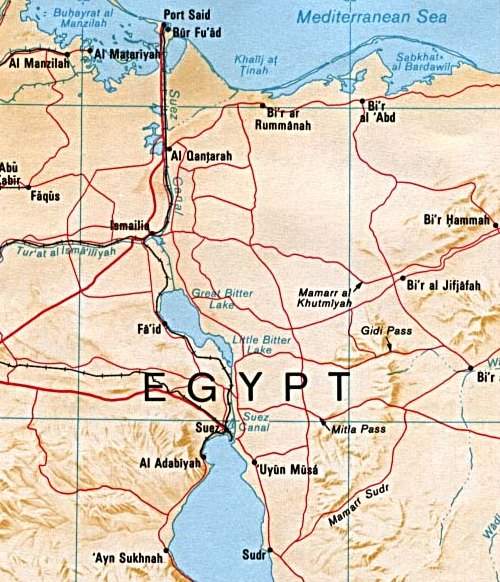The Yellow Fleet

The Suez Canal, situated in Egypt, connects the Mediterranean and Red Seas, thereby providing a naval passageway between Europe and Asia without the need to circumnavigate Africa or risk icy conditions by passing through the Arctic Circle. It opened in late 1869 and has been in continuous use ever since, minus a few hiccups along the way. One of those hiccups inconvenienced the world for eight years, as the canal was closed to naval traffic entirely from 1967 to 1975.
Oh, and fifteen ships were trapped in the canal during that period, too.
In June of 1967, war broke out in the Middle East, with Israel at odds with Egypt, Jordan, and Syria. The war was short-lived — the Israelis won a decisive victory within a week. (The war is now known as the “Six Day War.”) Following the war, Israel took control of the Sinai Peninsula, the section of Egypt east of the Suez which connects Africa to Asia. Soon after, the Egyptians blockaded the Suez, as the waterway was set to become a main theater for Egyptian-Israeli fighting over the course of the next decade. Most naval traffic was already avoiding the area due to the political uncertainties caused by the Six Day War, but fifteen ships were already making their way through the canal when war broke out. And all fifteen were unable to leave the canal afterward.
The ships dropped anchor in Great Bitter Lake, a saltwater lake roughly 100 square miles (250 square kilometers) in surface area, which divides the north part of the Suez from the south. And there, they sat, until the Egyptians ended the blockade on June 5, 1975. In the interim, the ships — four flying under the flag of the UK; two each from West Germany, the US, Sweden, and Poland; and one each from France, Bulgaria, and Czechoslovakia — formed their own little community of pseudo-castaways called the “Great Bitter Lake Association” replete with unofficial postal service among them. Their crews gathered aboard one of the British ships to play soccer matches, screened movies on a Bulgarian one, set up church services on a West German one, and availed themselves of the pool on the Swedish ships. To coincide with the 1968 Summer Olympics, the stranded sailors had their own Bitter Lake Olympic Games, replete with life boat regatta races.
When the blockade finally came to a close, the ships were free to leave. But for these vessels now collectively known as the “Yellow Fleet” due to the amount of desert sand blown upon them during their near-decade of isolation, leaving was not so simple. Of the ships, only the two German ones were able leave the canal on their own power.
Bonus fact: Since 2008, ship traffic through the Suez Canal has fallen off by 20% — but only half of that is due to an overall drop off of sea traffic due to unfavorable global economic conditions. The other half is due to Somali pirates for whom the Red Sea is fertile waters for hijacking ships and their cargoes.
From the Archives: Garbage City: A city in Egypt where garbage is the biggest part of the economy.
Related: The postage stamps from the Great Bitter Lake Association are collectors’ items, fetching over $100 each.

Leave a comment